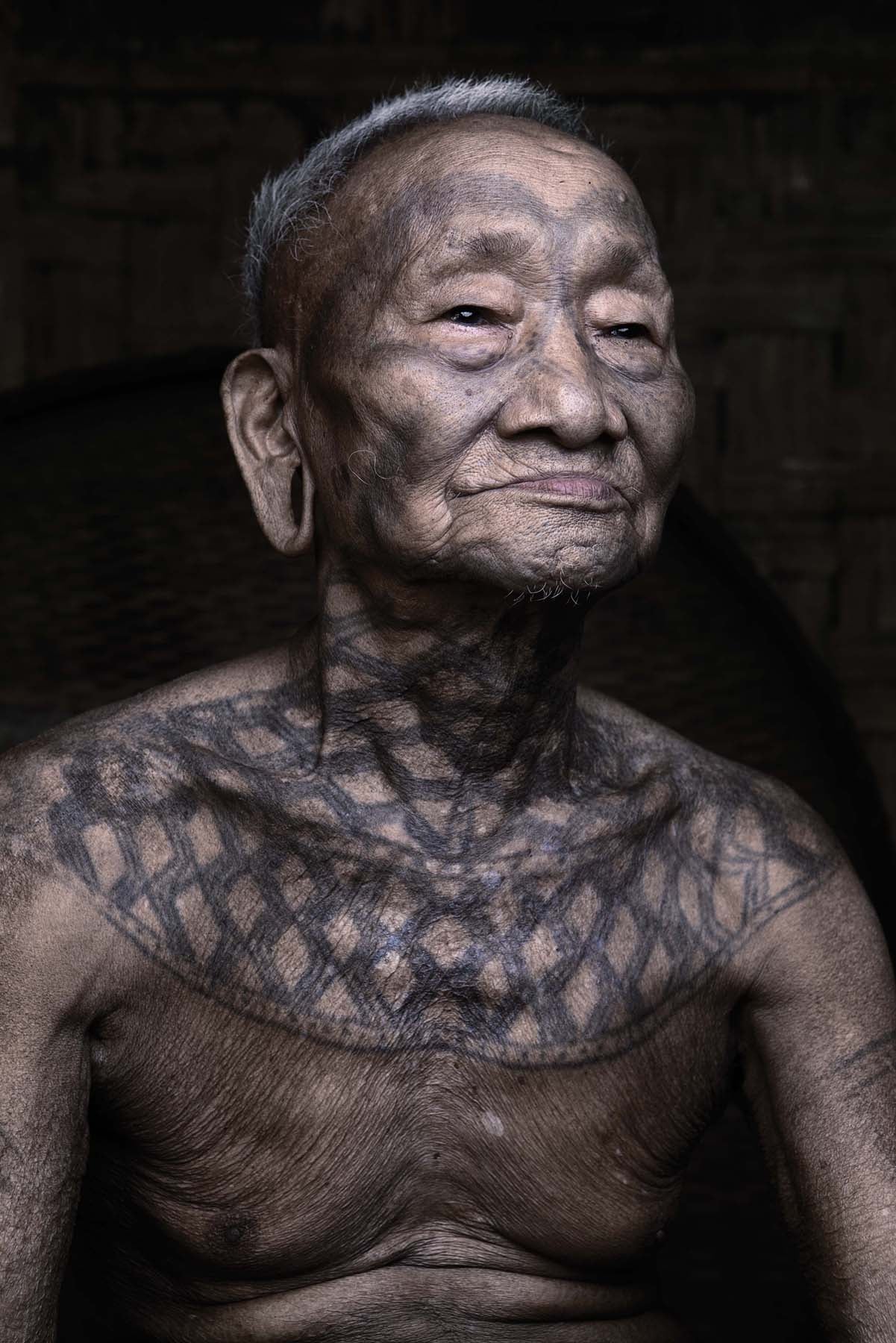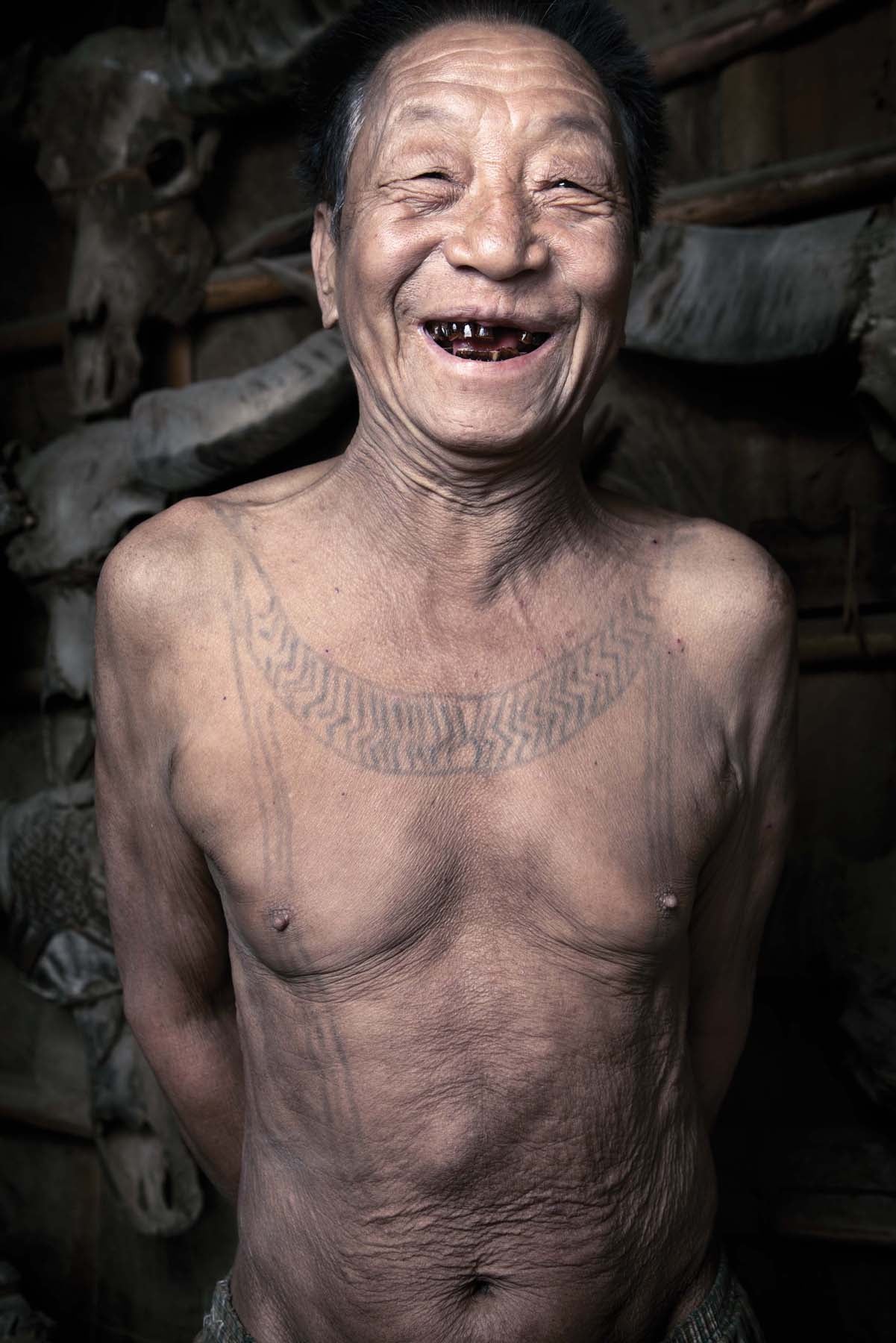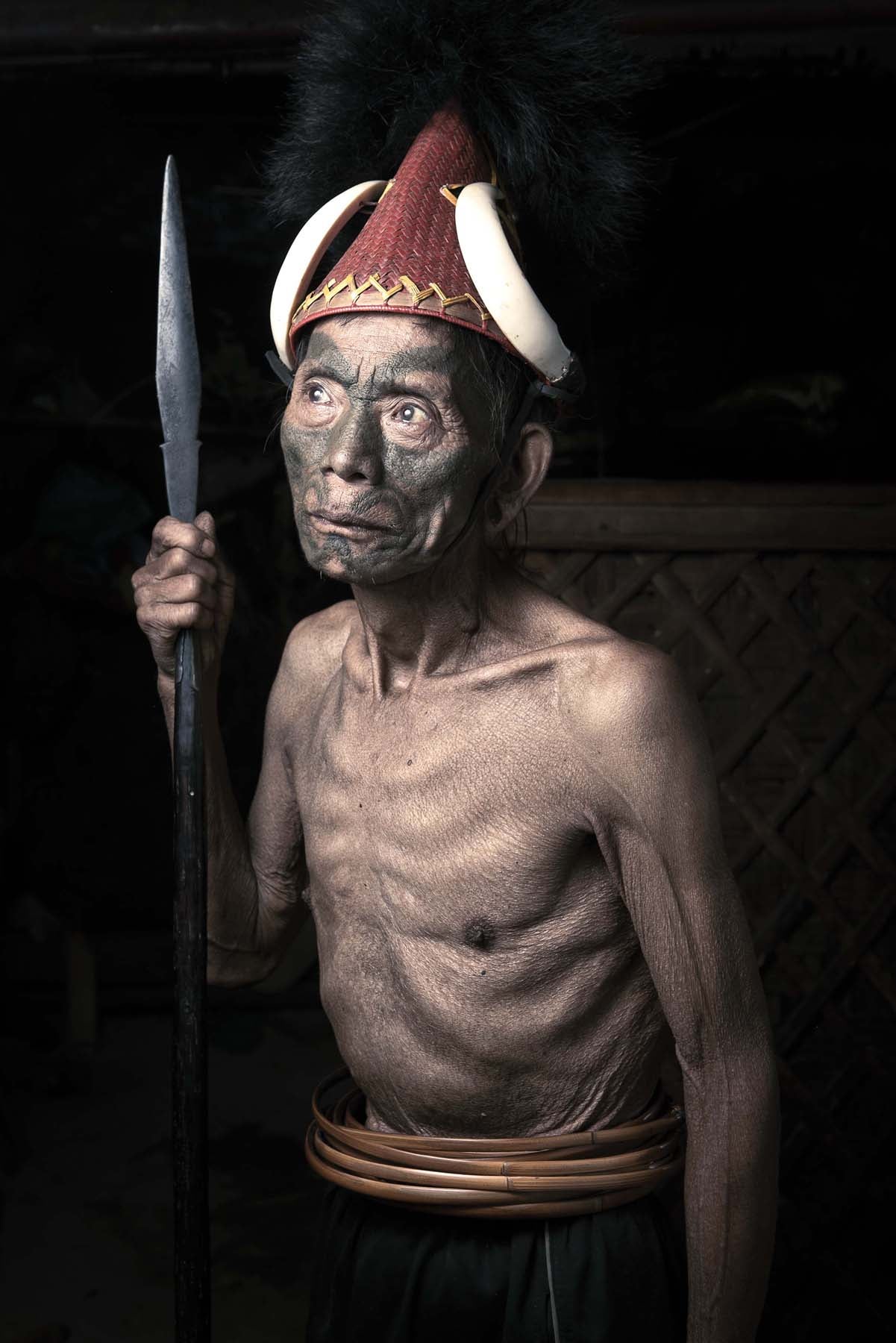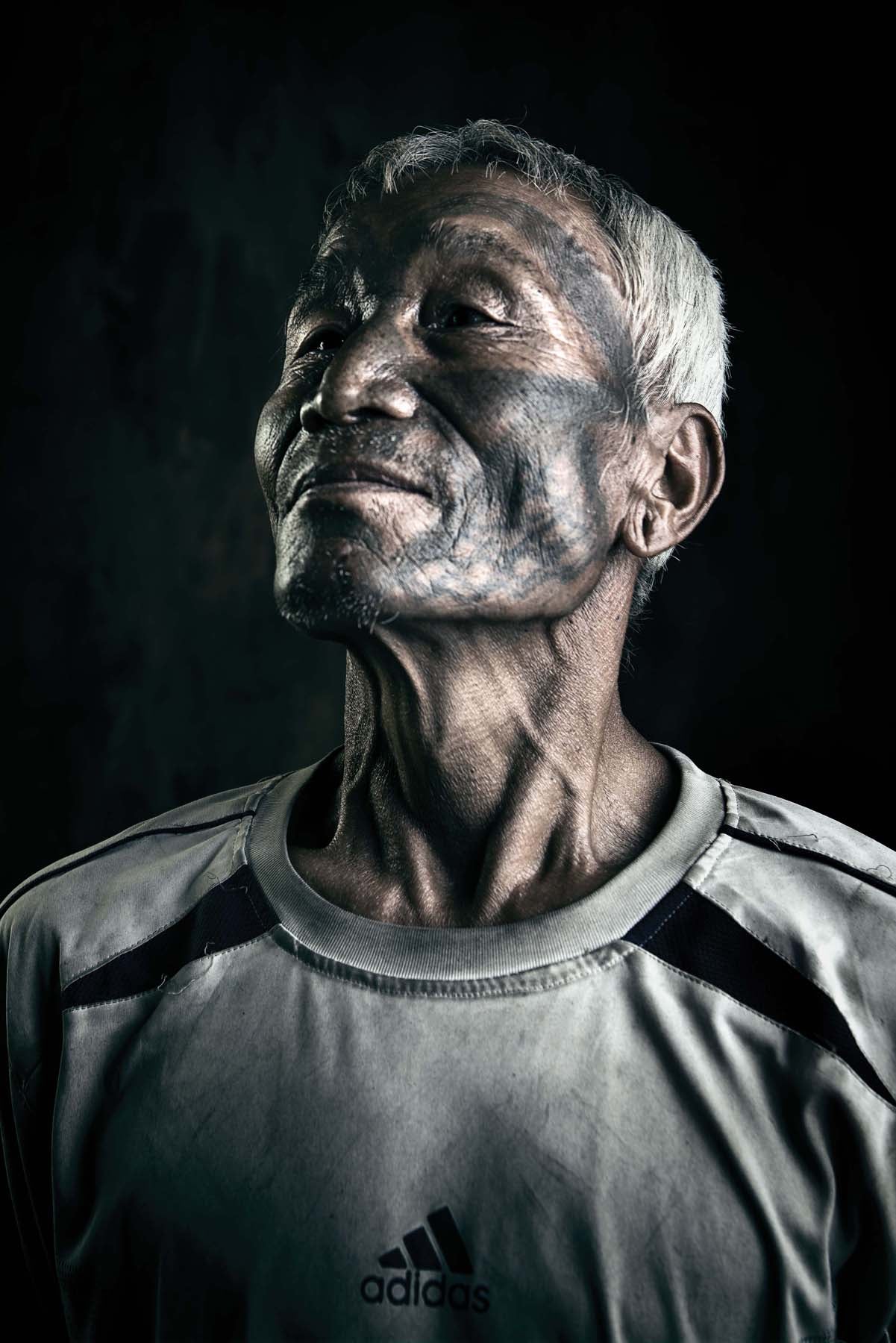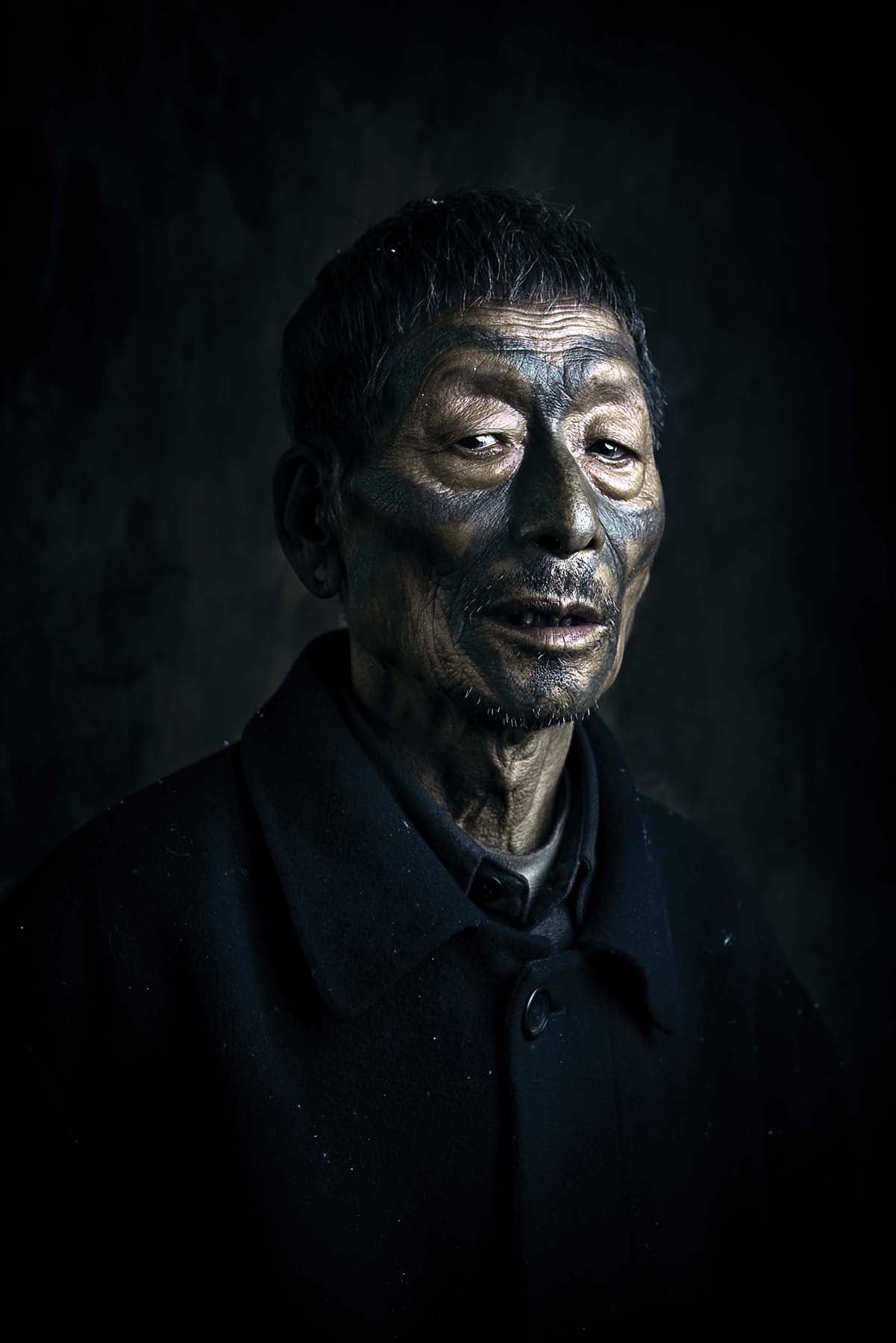These portraits of India’s last tattooed headhunters capture a vanishing culture
Of all the tribes that lived in the hills of what is now Nagaland, the Konyaks were particularly feared.
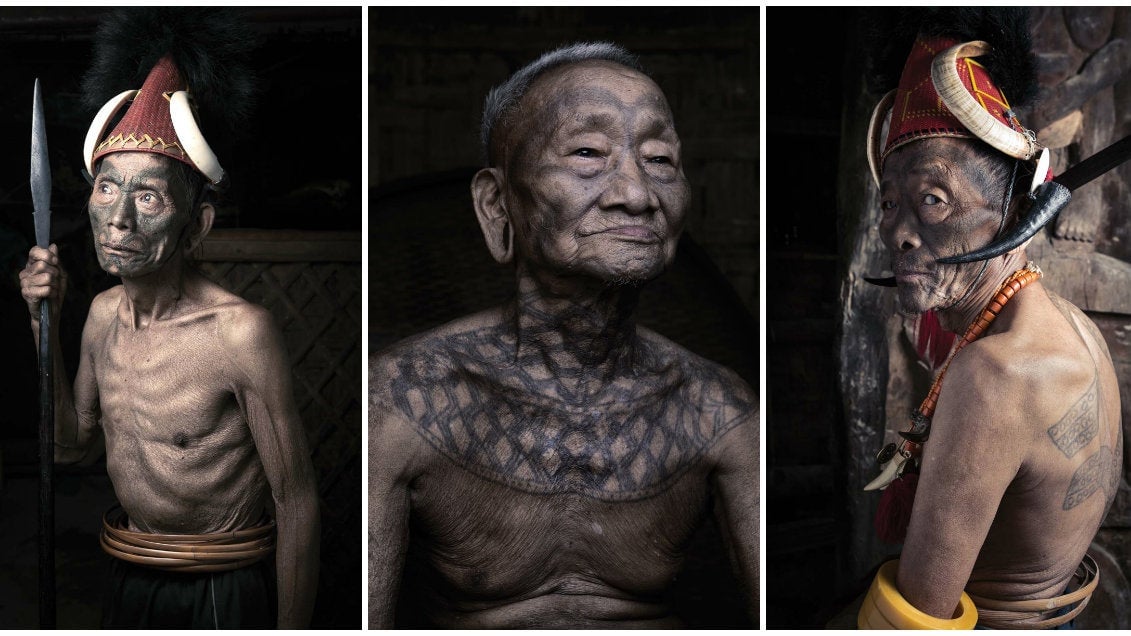

Of all the tribes that lived in the hills of what is now Nagaland, the Konyaks were particularly feared.
Made of up several groups, each differentiated by language and distinctive facial tattoos, they all practised headhunting—decapitating members of rival tribes being a rite of passage for young Konyak boys. Not surprisingly, they were also one of the most isolated tribes in the region.
That began to change as the British Raj began looking beyond the tea estates of Assam. In the 1870s, missionaries began setting up schools in the region and, over the following decades, thousands converted to Christianity.
The Konyaks were among the last.
In their zeal to “civilise,” the missionaries roundly discouraged the tribes’ ancient customs and traditions, labelling them heathen. The British Raj banned headhunting in 1935; by the 1960s, younger generations began to adopt modern ways and the unique culture of tattooing, too, began to fade.
It’s this disappearing heritage that Phejin Konyak, the great-grand-daughter of a Konyak headhunter, wanted to document in her new book, The Konyaks Last of the Tattooed Headhunters, published by Roli Books. For centuries, the tribe has passed on its stories orally to younger generations, but as its oldest members passed away, Phejin feared their history was at the risk of being lost forever.
So, over the past three years, she travelled from village to village in Nagaland’s Mon district, speaking to the elderly members of the Konyak tribe and recording their personal stories, songs, poems, and folktales. With the help of photographer Peter Bos, she also documented their unique facial and body tattoos, each one signifying the tribe, clan, and status in society of every member.
“Life, headhunting, and tattooing were seamlessly interconnected in the Konyak culture…Now the old warriors and their wives are the last remaining tangible proof of what was once a living tradition,” Phejin writes in the introduction to the book.
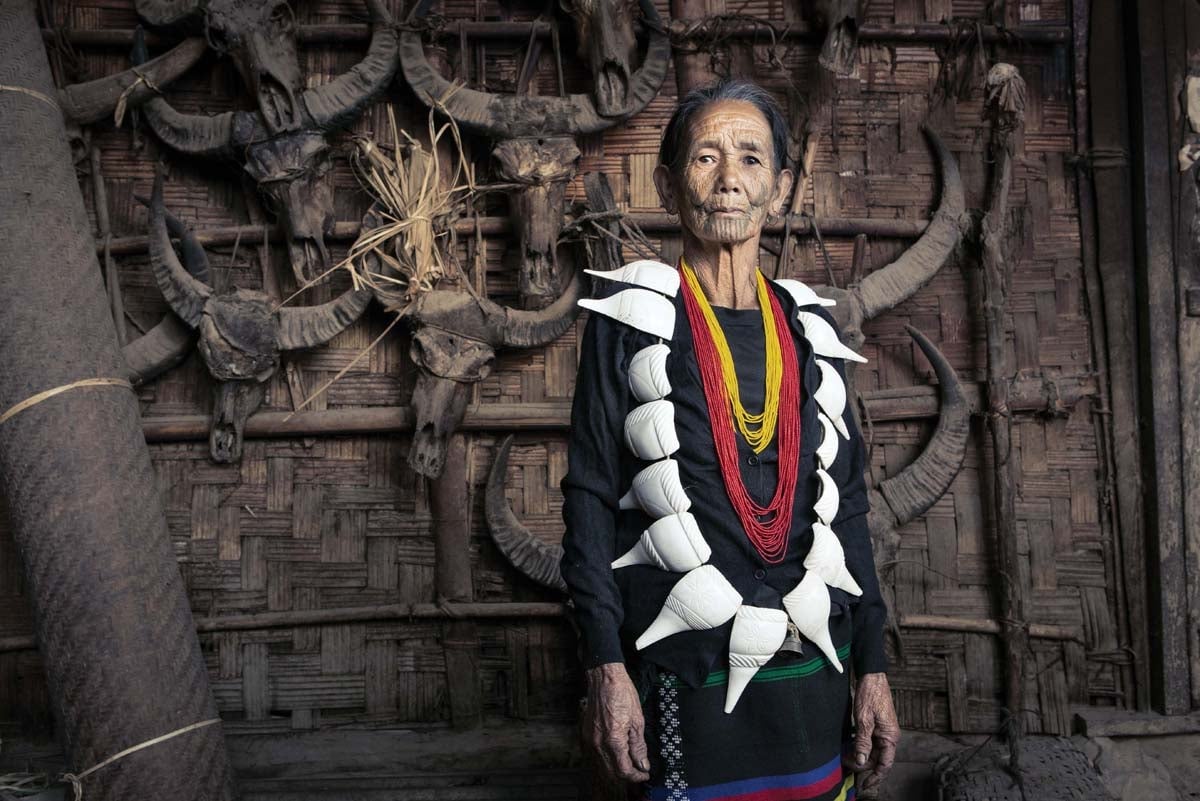
Interspersed with stark portraits of the last remaining tattooed headhunters are detailed accounts of the significance of each kind of tattoo, and essays on the social, cultural, and religious norms of the Konyak people, the majority of whom now identify as Baptist Christians.
But since Phejin herself comes from the community, even its history of headhunting is treated with sensitivity, recognised as a way of life for her ancestors.
“The Konyak belief was that the skull of a person has all the soul force of that being. This soul force is strongly affiliated with prosperity and fertility and is used for the benefit of the village, personal life, and crops,” she explains in the book.
But Phejin doesn’t entirely blame the foreign missionaries for sparking the beginning of the end of the tribal culture. In an interview with historian William Dalrymple, who wrote the foreword for the book, she confesses her mixed feelings about their effect on the community, acknowledging that it was their schools that helped improve literacy rates in the region.
“But I just wish that some of the Baptist missionaries had thought a little more deeply about the effects of their actions. They taught that the new religion was a rebirth, and nothing of the old ways should remain with (a) person who is born again. With these they discarded so much of our culture—just carelessly tossed it in a dustbin,” Phejin tells Dalrymple.
Here’s a selection of photos of the last surviving tattooed headhunters of the Konyak tribe:
